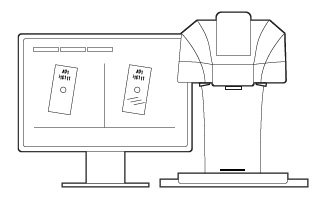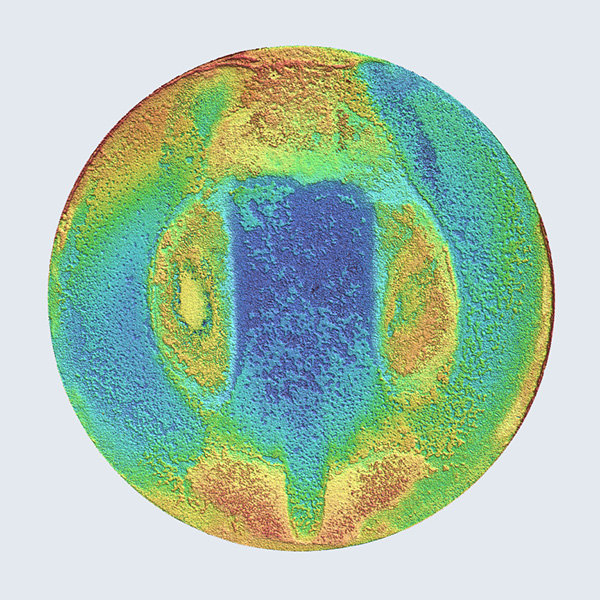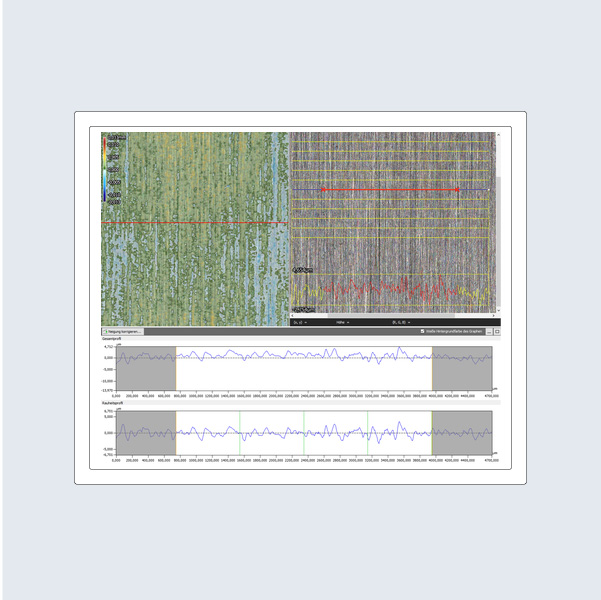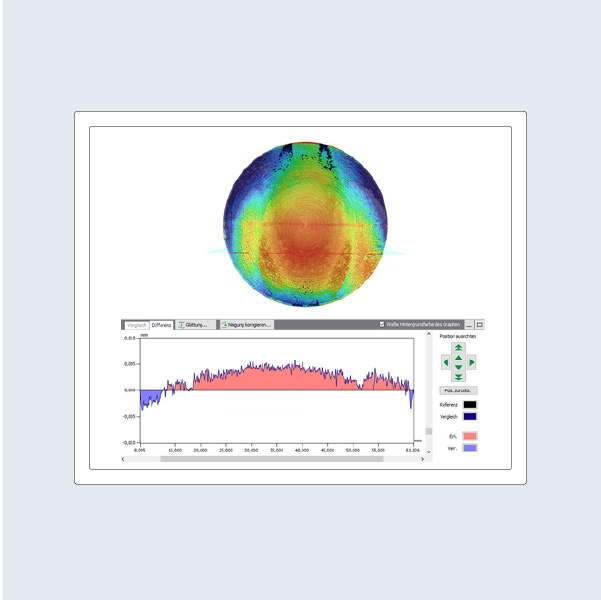The optical three-dimensional surface measurement generates a data set from which not only the surface roughness, waviness, shape and special characteristics of the surface are determined. In addition, parameters can be calculated that serve to describe the functional behaviour of a surface with regard to friction, wear, tightness, load-bearing capacity and running-in behaviour and characterise the optical appearance.
For surface investigations with regard to corrosion damage or the corrosion protection behaviour of coatings or fluids, the analytical description of the surface change compared to the initial or ideal state is of particular interest. Here, the 3D analysis method used at nexiss offers great advantages, as surfaces of up to 160 cm² can be measured and calculated. In particular, the difference analysis of two surface conditions (e.g. before and after the test) provides the user with a quick and qualified evaluation option.
This increases the quality of trial and test results while at the same time improving work efficiency.




